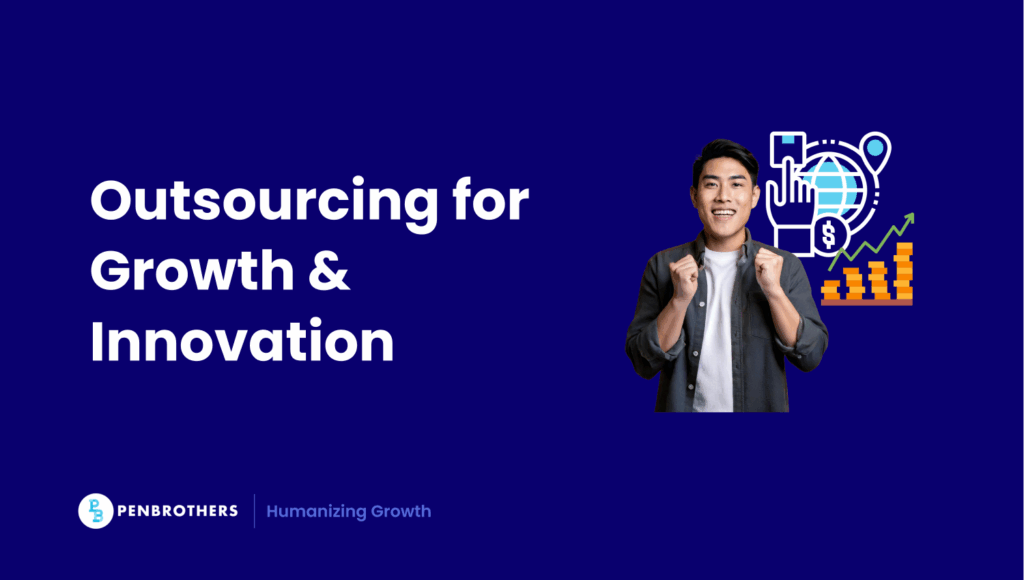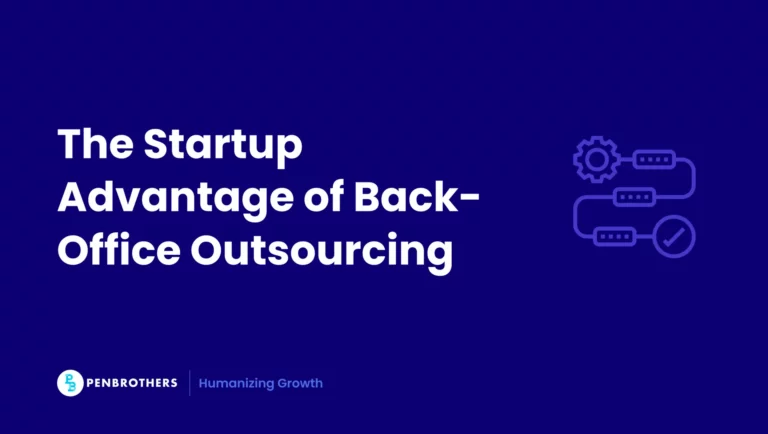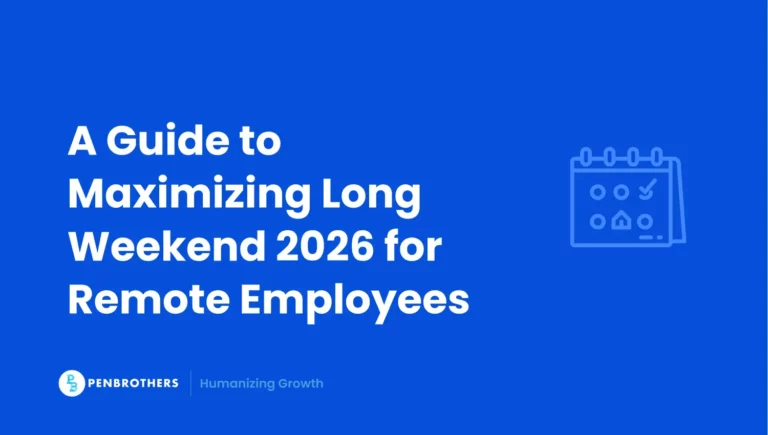Outsourcing is no longer just about cutting costs. It’s a growth strategy for businesses looking to scale efficiently. Companies across industries—from tech giants to startups—use outsourcing to tap into specialized talent, expand globally, and remain competitive.
The global Business Process Outsourcing (BPO) market is projected to exceed US$525 billion by 2030, growing at a CAGR of 9.8%. This surge isn’t just about volume; it reflects a fundamental shift where 92% of G2000 companies now use outsourcing to access specialized skills rather than just cheap labor. Future-focused businesses are locking in this growth by building teams that last, not just filling seats.
With the rise of offshoring, businesses can access top-tier professionals at a fraction of the cost, without the burden of local hiring complexities. But beyond cost savings, outsourcing is a catalyst for innovation, allowing businesses to streamline operations, enhance efficiency, and focus on what truly matters—growth. Strategic outsourcing has enabled leading companies to reduce innovation costs and risks by 60% to 90%, while also decreasing cycle times.
Key Takeaways
- A Strategic Engine for Growth and Innovation: Outsourcing has evolved from a simple cost-cutting tactic into a strategic growth engine. Businesses use it to access specialized global talent, scale rapidly, and drive innovation by freeing up internal leadership to focus on core strategic initiatives.
- Cost Savings Enable Reinvestment: Offshoring provides significant cost advantages, often reducing labor expenses by up to 70%. These savings are not just for the bottom line; they allow companies to reinvest capital into critical growth areas like product development, R&D, and market expansion.
- Access to a Deep, Specialized Global Talent Pool: The primary driver for outsourcing is now talent access. Companies are tapping into global hubs like the Philippines to find highly skilled professionals in high-demand fields like IT, cybersecurity, finance, and digital marketing, overcoming local skill shortages.
- Retention-First Models are the New Standard: The industry is shifting away from transactional “seat-filling” to “Retention-First Outsourcing.” This model focuses on long-term integration, structured onboarding (like the 180-day Hypercare Framework), and career development to ensure stability, reduce churn, and build institutional knowledge.
Outsourcing as a Growth Driver
1. Scalability and Business Flexibility
- Offshoring removes hiring bottlenecks that slow down expansion.
- Companies can scale teams up or down based on market demand.
- No need for additional office space, infrastructure, or local compliance headaches.
Many businesses delay expansion because hiring is slow, expensive, or unpredictable. Offshoring removes these barriers, enabling faster, more agile growth.
The demand for specialized tech talent is exploding, with the IT outsourcing market projected to reach US$1.2 trillion by 2030. However, scalability fails if your team churns. By removing hiring bottlenecks and ensuring long-term retention, companies can capture this growth without the volatility of constant rehiring.
2. Access to a Global Talent Pool
- Finding the right talent locally is tough. Offshoring opens access to skilled professionals worldwide.
- Companies no longer have to compromise on talent due to local talent shortages.
- Offshoring allows businesses to tap into niche expertise in IT, finance, customer support, and marketing.
At Penbrothers, we help companies build world-class teams—whether it’s a startup looking for a lean customer support team or a global brand needing senior developers. For more insights into offshoring trends, check out our blog on Offshoring Trends.
3. Workforce Expansion Without HR Burden
- Hiring and managing teams is time-consuming. Offshoring eliminates HR complexities.
- Businesses avoid administrative overhead while still having full operational control.
- Payroll, compliance, and workforce management are handled by offshoring providers like Penbrothers.
We ensure seamless onboarding, local compliance, and HR support, so companies can focus on business, not bureaucracy.
How Offshoring Fuels Business Innovation
1. Focusing on Core Business Functions
- Time spent on admin, HR, and non-core functions is time lost on growth and strategy.
- Offshoring enables businesses to delegate non-core tasks while focusing on product development, sales, and customer engagement.
Startups and SMEs often struggle with limited resources. Offshoring frees up leadership bandwidth, allowing them to prioritize innovation and business growth.
2. Leveraging Specialized Expertise
- Need high-level IT developers, cybersecurity experts, or multilingual customer support? Offshoring provides instant access to global talent.
- Companies can hire senior-level professionals at a fraction of the cost compared to in-house hiring.
- Offshoring firms provide ongoing training and development, ensuring teams remain competitive.
Penbrothers curates talent pools tailored to business needs, so companies get skilled, engaged professionals ready to deliver results.
Sustainable Business Growth Through Outsourcing
1. Operational Resilience & Risk Diversification
- Relying on a single market for hiring is risky. Offshoring spreads workforce operations across regions, ensuring stability.
- Companies build remote, distributed teams that function regardless of local disruptions (e.g., market downturns, regulatory changes).
The U.S. business process outsourcing market is projected to grow at a CAGR of 9.1% from 2023 to 2030, reaching USD 70.66 billion in 2022.
2. Sustainable Employment & Economic Impact
- Offshoring creates jobs in emerging markets, fostering economic development.
- Companies can build socially responsible, sustainable hiring practices while benefiting from top talent.
- Aligning with ESG (Environmental, Social, and Governance) goals through ethical offshoring is now a boardroom priority. Modern ‘Ethical Outsourcing’ demands total transparency—knowing exactly how much of your fee goes to the talent versus the provider. By adopting a transparent pricing model (fixed management fee + direct staff compensation), businesses ensure fair wages and build trust. This ethical approach doesn’t just check a compliance box; it fosters loyalty, reduces turnover, and builds a brand reputation that attracts top-tier global talent.
Companies that offshore responsibly contribute to global workforce empowerment while ensuring long-term sustainability.
3. Cost Optimization Without Quality Compromise
- Labor costs vary significantly across regions. Offshoring reduces expenses without lowering workforce quality.
- Companies save on office space, operational costs, and compliance fees.
- Offshoring eliminates the need for expensive in-house hiring, training, and retention efforts.
At Penbrothers, we don’t just cut costs—we help maximize value by delivering high-performance offshore teams that drive business outcomes.
Penbrothers’ Success Story
How an Australian Company Saved 78% on Costs while Driving Business Growth
DesignCrowd, a leading crowdsourcing platform for design services, needed to expand their team in the Philippines while ensuring compliance with local labor laws, payroll management, and HR support. They sought an offshoring partner who could provide a scalable and efficient solution. That’s when they partnered with Penbrothers, gaining access to high-quality talent and seamless HR administration.
Through Penbrothers, DesignCrowd successfully built a diverse and skilled offshore team in customer service, finance, and marketing. The partnership provided them with a cost-effective and legally compliant hiring solution, allowing them to focus on growing their business while benefiting from an engaged and highly skilled workforce.
Key Results:
- 78% average cost savings on key roles compared to hiring in the U.S.
- Payroll efficiency with streamlined HR processes and compliance management.
- Sustained employee growth by hiring top-tier Filipino professionals.
- Expansion into multiple departments, including customer service, finance, and marketing.
What is the Latest Trend in Outsourcing?
The most significant shift in 2025 is the move from transactional “seat-filling” to Retention-First Outsourcing.
In the past, high turnover was accepted as the “cost of doing business” in offshoring. Today, that model is obsolete. Leading companies are adopting frameworks like Hypercare—a structured 180-day integration process—to treat offshore talent as long-term extensions of their core team.
Why this matters now:
- Stability is the New ROI: Companies prioritizing retention see 22% higher profitability and significantly better customer outcomes.
- Ending the “Churn Cycle”: Traditional BPOs often see high attrition. A retention-first model targets a 92% retention rate after year one, ensuring institutional knowledge stays within your company.
- Strategic Integration: It’s no longer about handing off tasks; it’s about full cultural and operational alignment. This trend is driving the shift toward “value-driven” partnerships where the provider is accountable for team success, not just placement.
How Does Outsourcing Increase Productivity?
Outsourcing increases productivity not just by adding hands, but by removing the friction of “hiring and training” loops. However, real productivity gains only happen when teams stay engaged.
The Retention-Productivity Link:
- Eliminating Ramp-Up Waste: Replacing a lost employee costs 50% to 200% of their annual salary in lost time and recruiting fees. By retaining staff, you bypass this “productivity dip” entirely.
- Engaged Teams Deliver More: Data confirms that highly engaged remote teams are 21% more productive than their disengaged counterparts.
- Workflow Optimization: Modern offshoring partners don’t just supply people; they refine processes. Through active performance management and gap detection (key components of Penbrothers’ Hypercare approach), businesses typically see 20-30% workflow efficiency gains within the first six months.
Why Outsourcing is Essential for Sustainable Growth
Outsourcing is not just about saving money—it’s about building a resilient, high-performing team that drives innovation and long-term success.
Penbrothers is your partner in offshoring success.
Want to scale your business efficiently? Let’s build your offshore team today.
Frequently Asked Questions
Outsourcing drives innovation by freeing up internal teams to focus on core strategic initiatives like product development and R&D, rather than getting bogged down in administrative tasks. It also provides immediate access to specialized global talent with niche skills (like AI or cybersecurity) that can accelerate new projects.
The “Retention-First” model is a strategic approach that prioritizes long-term employee engagement and stability over quick, transactional hiring. It uses structured onboarding programs, career development pathways, and cultural integration to minimize turnover and build a dedicated, high-performing team.
Companies can typically save up to 70% on labor costs compared to hiring in Western markets like the U.S. or Australia. Beyond salaries, businesses also save on operational overhead, office space, and recruitment fees.
Traditional outsourcing often involves handing over a specific task or project to a third-party vendor who manages the execution. Offshoring, particularly in the modern context, involves building a dedicated, integrated team in another country that functions as a direct extension of your own workforce, giving you more control and scalability.
Ethical outsourcing supports Environmental, Social, and Governance (ESG) goals by ensuring fair wages, safe working conditions, and transparent operations for global workers. It also contributes to economic development in emerging markets and, through remote work models, can significantly reduce a company’s carbon footprint.






